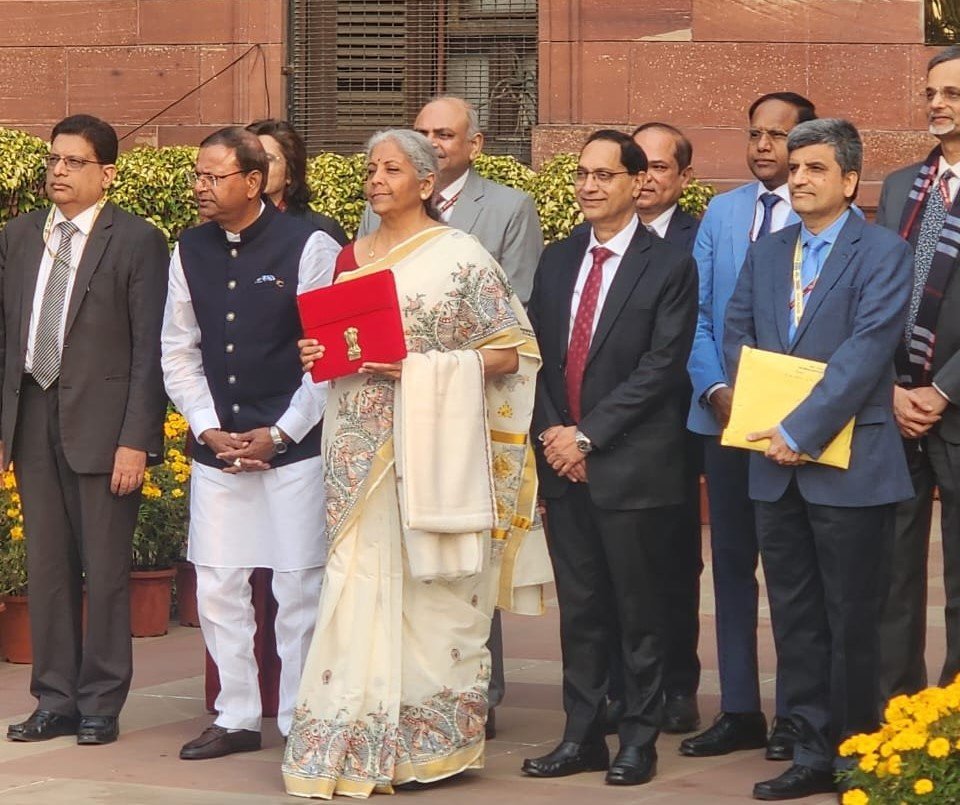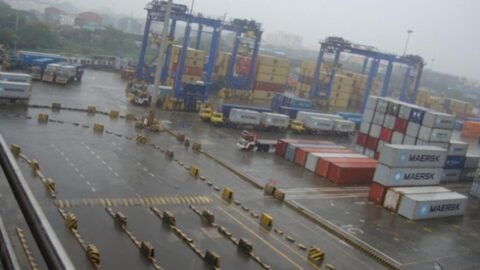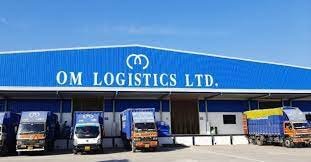The Union Budget 2025-26, presented by Finance Minister Nirmala Sitharaman, underscores the government’s commitment to strengthening India’s logistics and supply chain infrastructure. Building upon previous initiatives, the budget introduces several key measures aimed at enhancing efficiency, connectivity, and sustainability in the sector.
Maritime Development Fund
A significant highlight is the establishment of a ₹250 billion ($3 billion) Maritime Development Fund aimed at revitalising India’s shipbuilding and repair industry. The government will contribute 49% to this fund, with the remainder sourced from ports and private entities. This initiative seeks to enhance maritime infrastructure, reduce dependence on foreign carriers, and position India as a formidable player in global shipping. Plans include promoting shipbuilding clusters and extending a 10-year import tax exemption on inputs for shipbuilding and shipbreaking activities. Additionally, credit notes for shipbreaking will be issued to encourage the scrapping of old vessels and the construction of new ones.
Expansion of Air Cargo and Regional Connectivity
Recognising the critical role of air cargo in facilitating trade, especially for high-value perishable goods, the budget proposes significant investments in modernising air cargo infrastructure. This includes the development of state-of-the-art warehousing facilities equipped with advanced technology to ensure efficient handling and storage. Additionally, cargo screening and customs procedures will be streamlined to improve efficiency and reduce transit times and costs for exporters and importers.
To further strengthen regional connectivity, the budget introduces a modified UDAN (Ude Desh ka Aam Naagrik) scheme. This initiative aims to connect 120 new destinations using turboprop aircraft and helicopters, with a target of carrying 40 million passengers over the next decade. The scheme includes substantial incentives and development plans for smaller airports, helipads, and greenfield airports, particularly in hilly and northeastern regions. This expansion is expected to bolster regional trade and integrate remote areas into the national economy.
Capital Expenditure and Technological Integration
The government has consistently increased budgetary allocations for infrastructure to reduce logistics costs and enhance supply chain efficiencies. Capital expenditures grew by 28.4% in FY24 and are expected to grow by 17% in FY25. This sustained investment underscores the government’s commitment to strengthening the logistics framework. Additionally, there is a focus on technological integration, with expectations of reforms that will further accelerate growth and efficiency in the logistics sector.
Industry Reactions
Industry leaders have lauded the budget’s balanced approach to strengthening infrastructure, manufacturing, and consumer spending. Key measures include tax relief for the middle class, increased access to essential drugs, promotion of electric vehicle production, incentives for renewable energy, and support for the agricultural ecosystem. Experts are optimistic about the budget’s potential to increase disposable incomes and drive consumer demand while emphasising the importance of continued fiscal discipline and improvements in the ease of doing business. The budget includes significant steps towards developing India’s startup ecosystem, enhancing real estate accessibility, and expanding global supply chains.
Rampraveen Swaminathan, Managing Director and CEO of Mahindra Logistics, emphasises that the Union Budget reinforces India’s position as one of the fastest-growing major economies, strengthening the roadmap for overall growth in consumption and infrastructure. He highlights that the ‘National Manufacturing Mission’ and ‘Make in India’ initiatives will further accelerate domestic production, fueling ‘Move in India’—a vision for seamless cargo movement across the country. Additionally, the sustained emphasis on infrastructure development, along with a three-year project pipeline under the PPP model and state-backed incentives for capital expenditure, lays a strong foundation for future growth.
He further notes that the budget’s focus on logistics modernisation—including PM Gati Shakti, streamlined air cargo warehousing, and the new BharatTradeNet initiative—will enhance India’s logistics ecosystem. Aligned with these developments, Mahindra Logistics remains committed to leveraging technology, driving efficiency, and strengthening supply chain resilience. “We look forward to collaboratively building a future-ready, sustainable, and tech-driven logistics landscape, aligned with India’s growth ambitions,” he adds.
C.K. Govil, President of the Air Cargo Agents Association of India (ACAAI) & Chairman and Managing Director of Activair Airfreight India, acknowledges that the Union Budget 2025-26 presents a balanced roadmap that fuels economic expansion while maintaining fiscal prudence. He highlights that for the logistics, air cargo, and supply chain industries, the budget introduces key initiatives aimed at enhancing efficiency, reducing costs, and driving modernisation.
He further emphasises that these measures will strengthen the overall logistics framework, ensuring seamless operations and improved competitiveness. “The focus on infrastructure development and digital integration will play a crucial role in shaping a more efficient and resilient supply chain ecosystem,” he adds.







